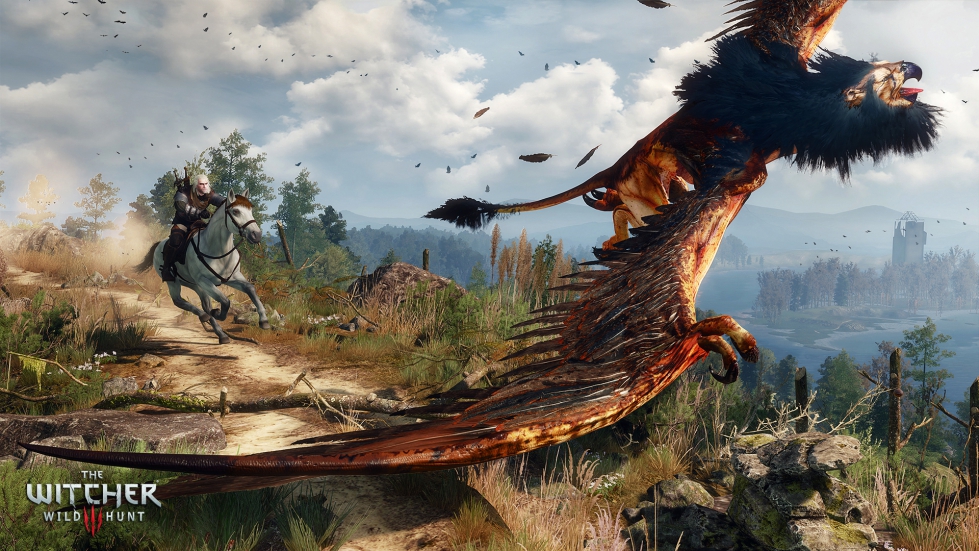In the ever-evolving landscape of entertainment, movies and video games have consistently captivated audiences worldwide, leaving an indelible mark on popular culture. The convergence of these creative worlds has given rise to a dynamic synergy, where captivating narratives, cutting-edge technology, and boundless imagination collide, transcending geographical and linguistic boundaries.

Let’s explore the pivotal role of localization in this convergence, shedding light on how it bridges gaps and unites diverse cultures through the shared experiences of film and video games.
The Increasing Global Demand for Entertainment
The global entertainment and media market size is expected to reach an astonishingly high value of over $3.5 million USD by 2027. Thanks to the rise in streaming entertainment, movies and video games are more accessible than ever. The gaming sector in particular, is expected to grow from a value of $227 billion in 2023 to $312 billion USD in 2027—with advertising revenue estimated to nearly double.
Competition in these spaces is also on the rise amongst digital content providers. As part of their content strategy, some producers and developers aim to invest in existing media that has already forged a name on its own instead of launching something completely new. The hope is this strategy will guarantee public interest in what they produce.

Building Bridges, Expanding Audiences
Certain franchises and intellectual properties (IPs) have seamlessly traversed the realms of both movies and video games, exemplifying the extraordinary potential and lasting allure of storytelling that transcends traditional screens and gaming devices.
What’s remarkable is how some prominent names in the entertainment industry originated from video games, while others sprang from the pages of books. However, it’s their seamless expansion across various mediums and languages that propelled them into the global cultural sphere, breaking down language and cultural barriers.
Here are some popular examples of video games that found success in both media formats:

- The Witcher: Originating as a Polish book saga, “The Witcher” transformed into a successful video game IP before landing a series on Netflix. The books, initially conceived as short stories in 1986, evolved into a fantasy saga, translated into 37 languages, and sold over 15 million copies worldwide. Following its Netflix adaptation in 2020, book revenues surged by an astounding 562%. Physical copies were swiftly sold out on Amazon, indicating their immense popularity. Game developer CD Projekt Red also reaped benefits, witnessing record-breaking player counts for “The Witcher 3” on Steam, and a 554% increase in physical game sales in December 2022. As of May 2023, The Witcher series boasted a staggering 75 million copies sold, with “The Witcher 3: Wild Hunt” standing out as the most beloved title in the entire series.
- The Lord of the Rings: Tracing its origins back to J.R.R. Tolkien’s book saga in 1955, “The Lord of the Rings” became a global phenomenon, selling over 150 million copies. Decades later, Peter Jackson’s movie adaptations brought Middle-earth to the forefront of public attention. Presently, there are over 30 gaming options available for enthusiasts, and Amazon has even developed the show “Rings of Power“, set in this universe. The series is renowned for its constructed languages, captivating audiences worldwide, thanks to translations of the books in over 50 languages and the cinematic marvel that ensued.
- Arcane – League of Legends: In a reverse trajectory, the acclaimed Arcane animated series is set in Riot’s League of Legends universe. Many hailed Arcane as a milestone in video game adaptations due to its high quality and it earned glowing reviews and an exceptional 9/10 rating on IMDB. Such acclaim is impressive, particularly considering the challenge of creating a compelling narrative from the lore of a video game. Its record-breaking success on Netflix was nothing short of phenomenal. Within just a week of its premiere, it soared to become Netflix’s highest-rated series at the time. Notably, it dominated the Netflix Top 10 Chart in a staggering 52 countries, an unprecedented achievement for an animated series rooted in gaming culture. This series was a juggernaut in the awards circuit, amassing an impressive 27 nominations and triumphantly securing 22 wins, including The Game Award for Best Adaptation in the 2022 edition.
The Role of Localization in Entertainment
When it comes to the world of entertainment, particularly in TV, films, and video games, localization plays a pivotal role in ensuring content resonates with diverse audiences worldwide. The importance of dubbing, subtitling, and voice acting cannot be overstated. These techniques enable language accessibility and significantly impact what we consume today. Streaming services have revolutionized the way we experience entertainment by offering customizable language options. Viewers can easily choose their preferred language for audio and subtitles, enhancing accessibility for everyone, including those with hearing difficulties or those seeking different language options. Thanks to these localization efforts, we can indulge in European, Korean, or Latin-American programs as if they were originally crafted for our local audience.

Cultural adaptation and context are integral components of effective localization. This adaptation goes beyond mere translation, incorporating elements like jokes, wordplays, original songs, and culturally relevant references to shows and products. They also ensure that the content feels relatable and resonates with global audiences, fostering a deeper connection between the viewer and the material.
Regarding video games, the challenges translators face are even more complex. Games often involve menus, interfaces, tutorials, and a plethora of in-game text, in addition to dialogues and subtitled segments crucial for understanding the game’s narrative. Each game genre presents unique challenges, but there are common threads that run through all localization efforts. Translators must navigate these complexities, ensuring that players can fully immerse themselves in the game’s story and gameplay experience.
The Takeaway
Due to the popular demand of new content, entertainment productions need to broaden their horizons in search of their ideal audience. One great ally on this quest is localization.
Language accessibility, facilitated through localization efforts, breaks down geographic and language barriers by enabling content to be seamlessly translated, dubbed, or subtitled into various languages. This approach ensures that individuals worldwide can enjoy films, TV shows, and video games in their native languages, fostering a deeper connection and understanding of diverse cultures, ultimately uniting the world through shared narratives and experiences.



